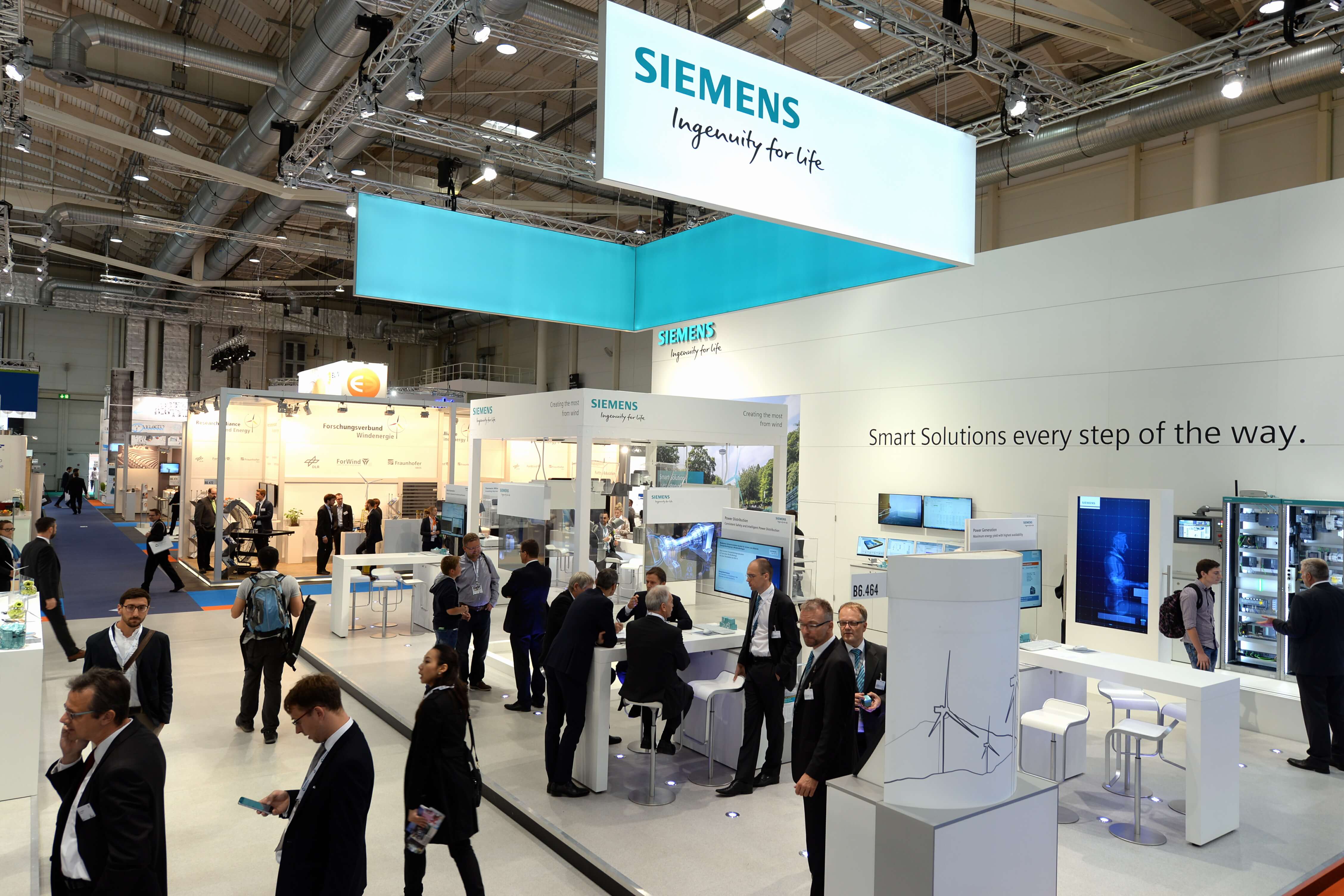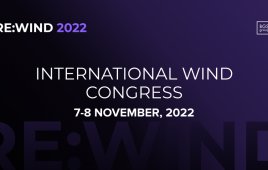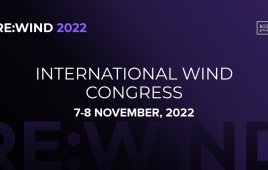With the production tax credits winding down and the offshore wind industry ramping up in the United States, it is an ideal time to take note of how other countries are faring with their wind efforts and learn from the examples of others. Consider Germany, France, Belgium, Croatia, Ireland, and the UK. All have experienced a record year for wind installations in 2017.

About 35,000 industry visitors from around the world are expected to attend the Global Wind Summit. The exhibiting companies hail from approximately 40 different countries, with 22 nations represented by regional and national pavilions. New countries attending this year’s event include South Africa, Iceland, Latvia, and Lithuania.
The EU alone added 12,484 MW onshore and 3,154 MW offshore of installed wind capacity. The European wind industry also has a 40% share of all the wind turbines sold globally, and exports about €8bn in technology and services every year.
While the U.S. is making strides (wind is expected to overtake hydropower as the leading source of renewable power in the country next year), the country still has much to learn, particularly in the offshore sector.
One place to gain the insight of global wind industry leaders is at the Global Wind Summit, currently the world’s largest onshore and offshore wind event. This year’s event runs September 25 to 28, and combines WindEnergy Hamburg’s annual expo with the global conference of WindEurope. The goal is to provide industry experts and advocates with a comprehensive conference and exhibition that highlights the full wind value chain. Attendees can expect industry representatives from about 40 countries who will present product and service innovations for wind, and discuss current industry trends and challenges.
“For both onshore and offshore wind, the Global Wind Summit in Hamburg is the place to learn about key policy and market developments, best practice from around the world, and to have a look at the latest technologies and how they are being deployed,” said Steve Sawyer, Secretary General of the Global Wind Energy Council, at an advanced press conference for the show held in Hamburg in early June.
The American Wind Energy Association (AWEA) recognizes the event’s value and will lead WindEnergy Hamburg’s USA Pavilion. “American wind power has world-class resource potential, a robust supply chain, and a bright future that we’re excited to showcase at the WindEnergy Hamburg’s USA Pavilion,” said Brent Nussbaum, AWEA’s Vice President, Member Relations in a recent press statement.
Here are three reasons you should attend the show.
1. Solidifying connections — onshore & offshore
The event organizers expect the Global Wind Summit and WindEnergy Hamburg to provide an excellent opportunity for developers and operators to connect with OEMs and O&M experts. In fact, many key manufacturers, such as Vestas, Siemens Gamesa, Nordex Acciona, and GE Renewable Energy — which combined provided 99% of all new onshore wind turbines in the U.S. last year — will exhibit at the show.
“Land-based wind power is a competitive and mainstream energy source, supplying over 6% of U.S. electricity last year and supporting over 100,000 U.S. workers across all 50 states,” said Nussbaum. “Looking ahead, offshore wind is poised to take off, expanding the opportunity for workers and supply chain businesses to manufacture, deploy, and operate these projects.”

This year, AWEA is teaming up with WindEnergy Hamburg at the Global Wind Summit to support the event’s USA Pavilion. Here, AWEA’s CEO, Tom Kiernan, speaks at a wind event. To register for the conference, click here.
Siemens Gamesa and MHI Vestas currently lead the European offshore market with 7 to 8-MW+ direct-drive and 8 to 9.5-MW medium-speed geared turbines, respectively. GE supplied five, 6-MW Haliade 150-6MW direct-drive turbines for America’s first offshore wind farm, Block Island Wind. The company is now working on its 12-MW Haliade X for delivery in 2021, with a record 220-meter rotor diameter. The U.S. has some catching up to do offshore, and is working on developing a pipeline of new projects.
Massachusetts and Rhode Island recently contracted for a combined 1,200 MW of offshore wind, which could become the country’s largest offshore wind farm. New Jersey has set a goal of 3,500 MW of offshore wind by 2030. Two developers, Magellan Wind and Copenhagen Infrastructure Partners, have joined forces to develop a portfolio of floating offshore wind projects off the California coast and potentially other areas of the country.
The Global Wind Summit is one place U.S. wind developers can connect with experts before the country’s offshore wind boom truly begins.
2. Gaining digital insights
Increased use of data and analytics in the energy sector could save power companies close to $20 billion per year, according to the International Energy Agency’s (IEA) first report on energy and digitalization, released late last year. The IEA says that digital data and analytics can reduce power system costs in at least four ways.
- Reducing O&M costs
- Improving power plant and network efficiency
- Decreasing unplanned outages and downtime
- Extending the operational lifetime of assets
Wind energy pioneer, and owner of nearly 650 patents in wind, Henrik Stiesdal, was a speaker at the advanced press conference for the Global Wind Summit. He believes digitalization could make a significant impact on O&M costs.
“Typically, we plan a 25% proportion of funds for maintenance and services in the overall costs of a wind farm. However, digital solutions could give us the possibility to cut these costs by half,” he said. Others in the industry agree with Stiesdal.
More than 700 industry experts from around the world recently participated in a survey for the “WindEnergy trend: index.” Two-thirds of respondents indicated that digitization is the key to optimizing onshore and offshore wind projects.
“Today we have wind turbines as standalone units, but digitization may open the opportunity to build intelligent wind parks that reduce the wake effect,” added Stiesdal.
To help with digital decisions and challenges, WindEurope is planning a full day of conferences at the Global Wind Summit dedicated to “Digital wind & new technologies.” Day two of the event will focus on the latest advances in big data and digital wind technologies.
According to WindEurope’s organizers: “Digitalization is opening new ways to design, manufacture, operate, and maintain wind farms. From materials science applications that predict failures in wind-turbine components with unprecedented accuracy, to big data analyses that optimize energy yields, the industry is becoming ever more sophisticated, and increasingly contributing to system integration.”
Digitilization is becoming an important key to a low-cost wind energy future. In addition to data ownership and sharing, the conference will focus on system integration, lifetime extension, cost reduction, and cyber security.
3. Learning new markets
The wind industry has made great progress reducing the levelized cost of electricity (LCOE). In fact, wind power is one of the most affordable options for new electricity generation in the U.S. Wind’s unsubsidized costs are competitive with conventional generation in certain regions of the country, ranging from $30 to $60/MWh in 2017.
This is good news for wind advocates. However, new markets are changing the playing field.
A few examples:
- Record-low corporate power purchase agreements are transforming how major corporates source their energy. Utility and non-utility companies signed a record 3,500 MW of long-term PPAs for wind power in the first quarter of 2018. As a result of low-cost agreements, Xcel Energy in Colorado is proposing to retire several coal plants and replace them with wind — while saving customers costs. Such changes mean new opportunities for wind developers and new ways of sourcing power for utilities and corporations.
- New technologies at lower costs are forcing the industry to think outside of conventional methods of wind power. Floating offshore wind, for example, would let offshore developers build in deeper waters. Many experts believe floating technology will soon be ready for commercialization at utility-scale projects.
- The recent preference for public invitations to tender for onshore and offshore wind projects represents a global paradigm shift. Wind-power costs have dropped substantially since Germany and the UK switched to auctions. While some debate the value of wind auctions, they are occurring with frequency. Last year, even the U.S. Department of the Interior and Bureau of Ocean Energy Management announced that 122,405 acres offshore North Carolina would be offered in a commercial wind lease sale.
- New markets are emerging across Africa, Asia, and Latin America. A solid pipeline of wind projects are lined up in previously quiet regions.
According to event organizers, these changes are bringing new opportunities to the wind sector, but also significant challenges because there is no longer a “one-size-fits-all model” for how industry players should operate.
“Different regions and different players require different solutions. At the Global Wind Summit, conference representatives of the finance community, investors, and the broader wind supply chain will address current challenges and present new market solutions, while industry players on the expo floor will show how their technology helps address these challenges while expanding the global reach of the wind industry.”
A series of “Invest in” sessions will give event attendees an opportunity to learn about new markets and meet key players. There will also be sessions on development in constrained and difficult-to-access regions, lifetime extension and repowering, and new market opportunities for a maturing industry. And to top off the event, conference sessions will focus on improving the social acceptance of wind and exploring how to best maximize support for the industry and its future success.
 Did you know?
Did you know?
The Global Wind Summit will combine two events: WindEnergy Hamburg 2018 and WindEurope.
More than 1,400 companies will exhibit at WindEnergy Hamburg, which will focus on three key topics: Dynamic Markets, Cost Efficiency, and Smart Energy.
WindEurope Conference will host more than 50 conference sessions by 250 experts broken down into four days.
- Day One: Electrification & sector-coupling
- Day Two: Digital wind & new technologies
- Day Three: The wind industry in a merchant environment
- Day Four: New markets, new frontiers & the long-term outlook
Filed Under: Events, News, Offshore wind




